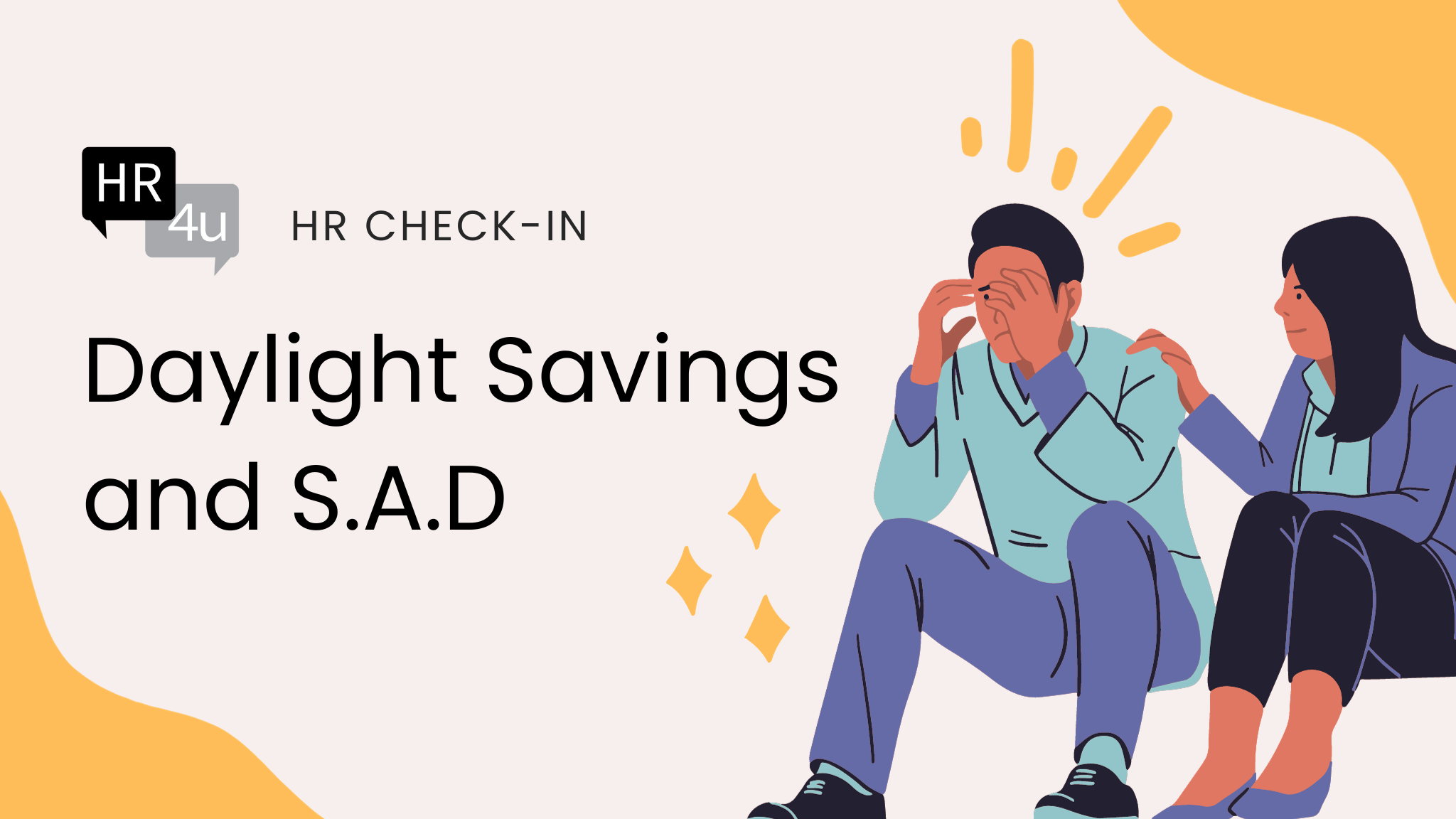As we quickly approach Nov 5, when the clocks “Fall Back,” for many, we also begin the season of SAD. Seasonal Affective Disorder (SAD) is a type of depression that recurs with the changing seasons, most commonly during the fall and winter months when there is less natural sunlight. While often dismissed as the “winter blues,” SAD is a genuine mental health condition with profound effects on those who experience it. Symptoms include persistent sadness, loss of interest in activities, and feelings of hopelessness. These symptoms can lead to emotional distress and anxiety, making it challenging for individuals to maintain their mental well-being. Cognitive functions may also be impaired, with difficulties in concentration and decision-making, further impacting mental clarity.
The domino effect on employees’ work-life balance can become overwhelming when fatigue, mood changes, and reduced motivation disrupt daily routines, making it harder to separate work from personal life. Affected individuals may find themselves withdrawing socially, making it more challenging to engage in activities with colleagues outside of work. This can lead to feelings of isolation and affect team dynamics.
SAD affects both remote workers as well as in-office employees, making it difficult to get a grasp on how best to support your team. When was the last time you checked in on your team? Do you have a scheduled time to check in with them in the coming weeks as the days become “shorter”? What have you put in place as safeties and support for individuals who may be experiencing SAD?
What are some steps employers can take to support affected employees? This might include offering flexibility, creating a work environment that encourages well-being, and providing resources for mental health support. Promoting open communication and understanding of mental health issues in the workplace can help employees better manage their work-life balance and productivity. When employees feel supported and understood, they are more likely to navigate the effects of SAD and continue to contribute effectively to the workplace.
Dealing with Seasonal Affective Disorder (SAD) in the workplace requires sensitivity, understanding, and a proactive approach to support affected employees. Each employee will have different needs, and as employers it is vital to the workplace that we explore what options will work best.
Awareness and Education:
-
- Make sure managers and employees are aware of SAD and its symptoms.
- Provide resources, such as informational materials or training sessions, to educate your workforce about SAD.
Flexibility:
-
- Offer flexibility in work arrangements, such as adjusted work hours or remote work, if possible. This can help employees manage their symptoms and maintain productivity.
Access to Natural Light:
-
- If feasible, consider rearranging office spaces to provide more access to natural light. Exposure to natural light can help alleviate some of the symptoms of SAD.
Employee Assistance Programs (EAPs):
-
- Offer access to Employee Assistance Programs that provide confidential counseling and support for employees dealing with mental health issues, including SAD.
Encourage Time Off:
-
- Encourage employees to take paid time off or use their sick leave when needed. SAD can be a legitimate reason for taking time off, and employees should feel comfortable doing so without fear of stigma or repercussions.
Supportive Environment:
-
- Foster an open and non-judgmental workplace culture that encourages employees to communicate about their mental health issues and seek support.
Reasonable Accommodations:
-
- Work with affected employees to determine reasonable accommodations that can help them manage their symptoms, such as adjusted workload or deadlines during peak SAD periods.
Employee Wellbeing Programs:
-
- Implement employee wellness programs that promote overall mental health and wellness. This can include activities like yoga, mindfulness sessions, or stress management workshops.
Encourage Self-Care:
-
- Encourage employees to practice self-care and provide resources on how to do so effectively, including tips on managing stress, improving sleep, and maintaining a healthy diet.
Check-Ins:
-
- Managers can periodically check in with their team members to gauge how they are feeling and if they need any support. Regular communication can help identify issues early.
Remember that it’s essential to respect employee privacy and confidentiality when dealing with SAD or any other mental health issue. Additionally, creating a culture of support and empathy in the workplace benefits all employees, not just those with SAD. It’s important to promote a healthy work-life balance and prioritize the mental well-being of your entire workforce.
If you need help navigating what appropriate support for employees during this time might look like, please reach out to HR4U today!

